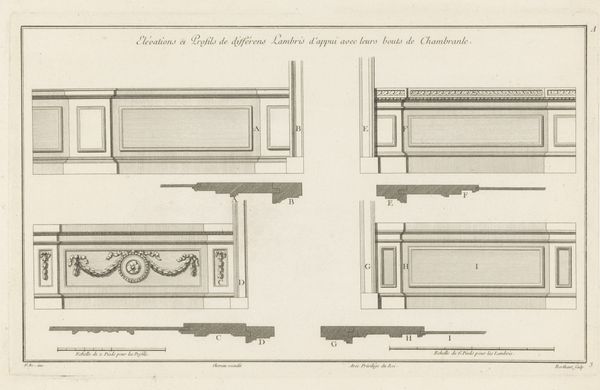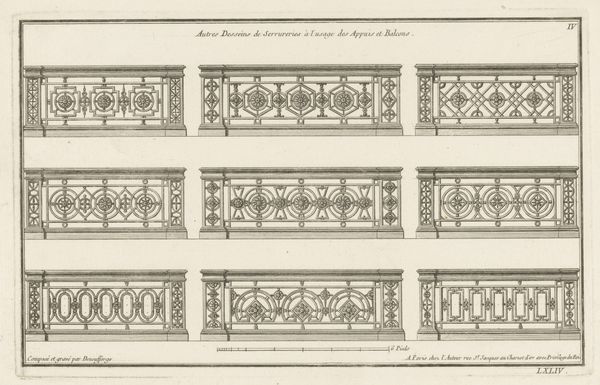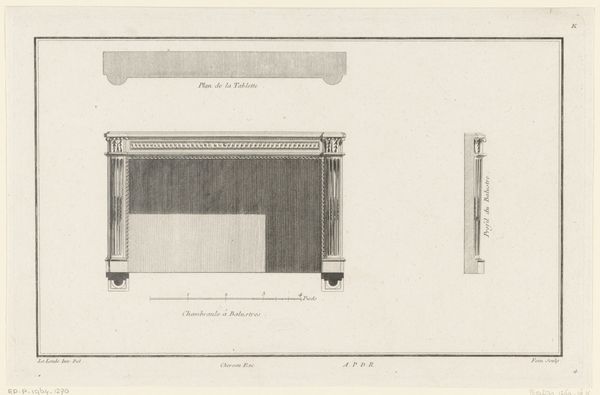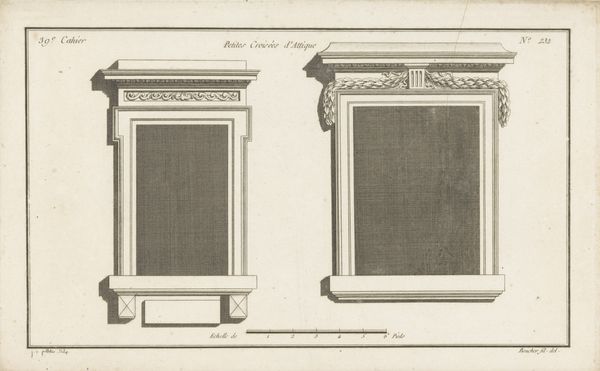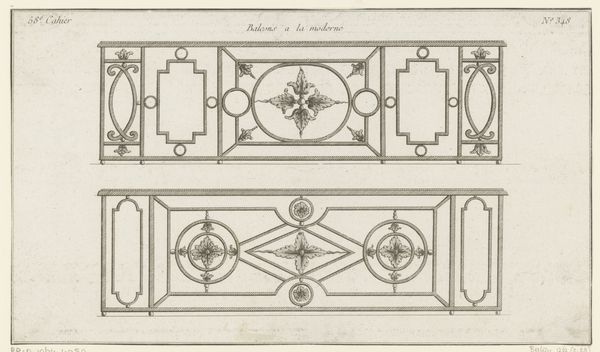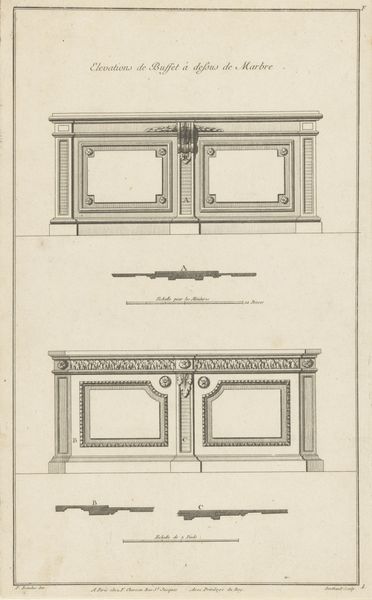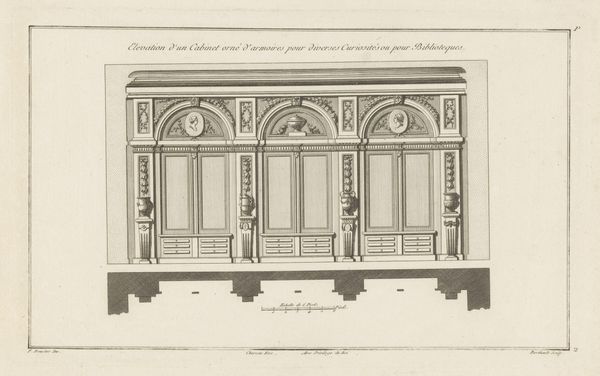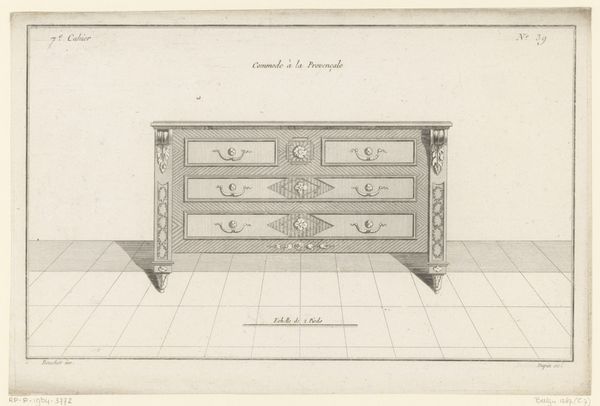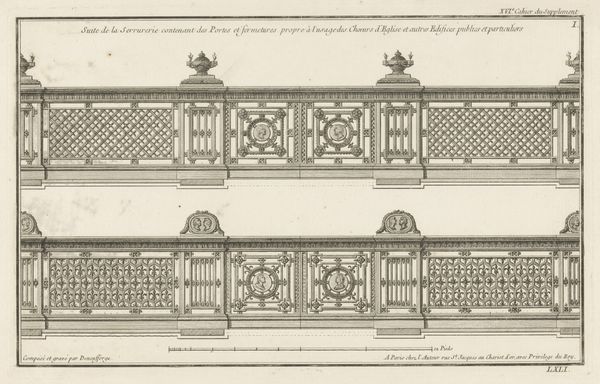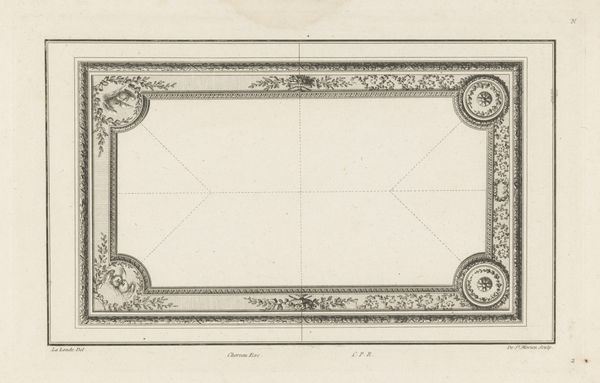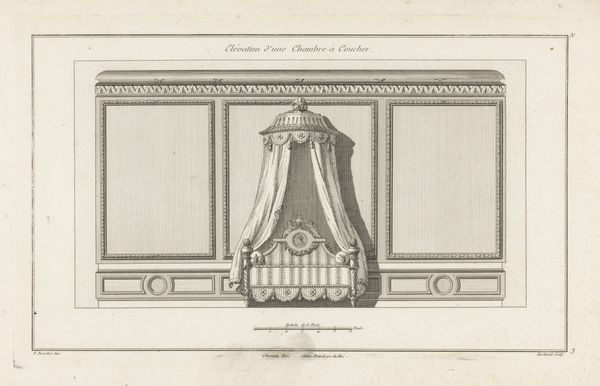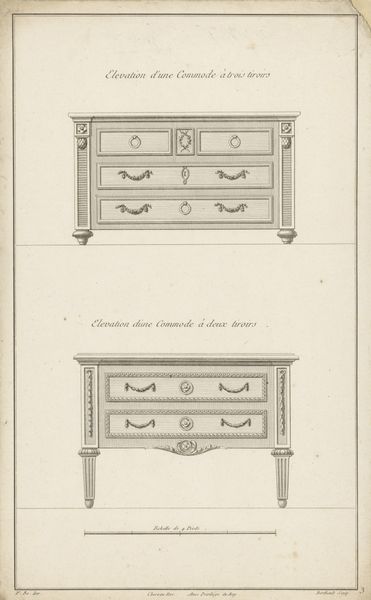
drawing, paper, engraving, architecture
#
drawing
#
neoclacissism
#
classical-realism
#
paper
#
form
#
line
#
academic-art
#
decorative-art
#
engraving
#
architecture
Dimensions: height 221 mm, width 359 mm
Copyright: Rijks Museum: Open Domain
Curator: Today, we're looking at "Twee lambriseringen," or "Two Wall Panellings," an engraving by Pierre Gabriel Berthault dating between 1752 and 1794, held here at the Rijksmuseum. What's your first take? Editor: Stark, precise, and a little… clinical? It reminds me of architectural blueprints, stripped of any romanticism. It feels very much about utility. Curator: Right. It exemplifies Neoclassicism, a movement that revived classical forms. This aesthetic intersected heavily with emerging notions of reason, order, and even citizenship. Editor: How so? What does a wall panel have to do with citizenship? Curator: The design here speaks to societal structure. The symmetry and clean lines represented a move away from the excess and perceived moral decay of the Rococo period. It was embraced by the aspiring bourgeois class, associating themselves with ideas of republican virtue borrowed from antiquity. The material used in these interiors played a key part of what you saw, and, of course, who had access to it. Editor: It’s about signaling power, then? Not just individual, but class-based. Were these panelings actually widely used, or were they aspirational for the rising bourgeoisie? Curator: Both, I believe. These engravings circulated as templates, influencing the design and craftsmanship of interior architecture and reflecting evolving socio-political tastes. The format itself—reproducible engravings—contributed to a wider accessibility of these design ideals. Editor: And let's not forget the labor involved! Consider the woodworker meticulously following these precise lines. There's an inherent value in that physical creation that this drawing somewhat obscures. The drawing presents a controlled, intellectual view of craftsmanship, but in reality, the making process is a complex affair. Curator: Exactly, the ideology represented in art like this affects working class experience. It brings the world from above directly into daily realities. Looking closely at how these movements effect populations makes my head spin in circles. Editor: Yes, it's easy to forget about how art has real social effects outside of its aesthetic beauty. It’s been really insightful looking at this piece with you. Curator: Agreed. Thinking about the drawing process itself, about material access, and about social consequences really transforms a simple etching!
Comments
No comments
Be the first to comment and join the conversation on the ultimate creative platform.
